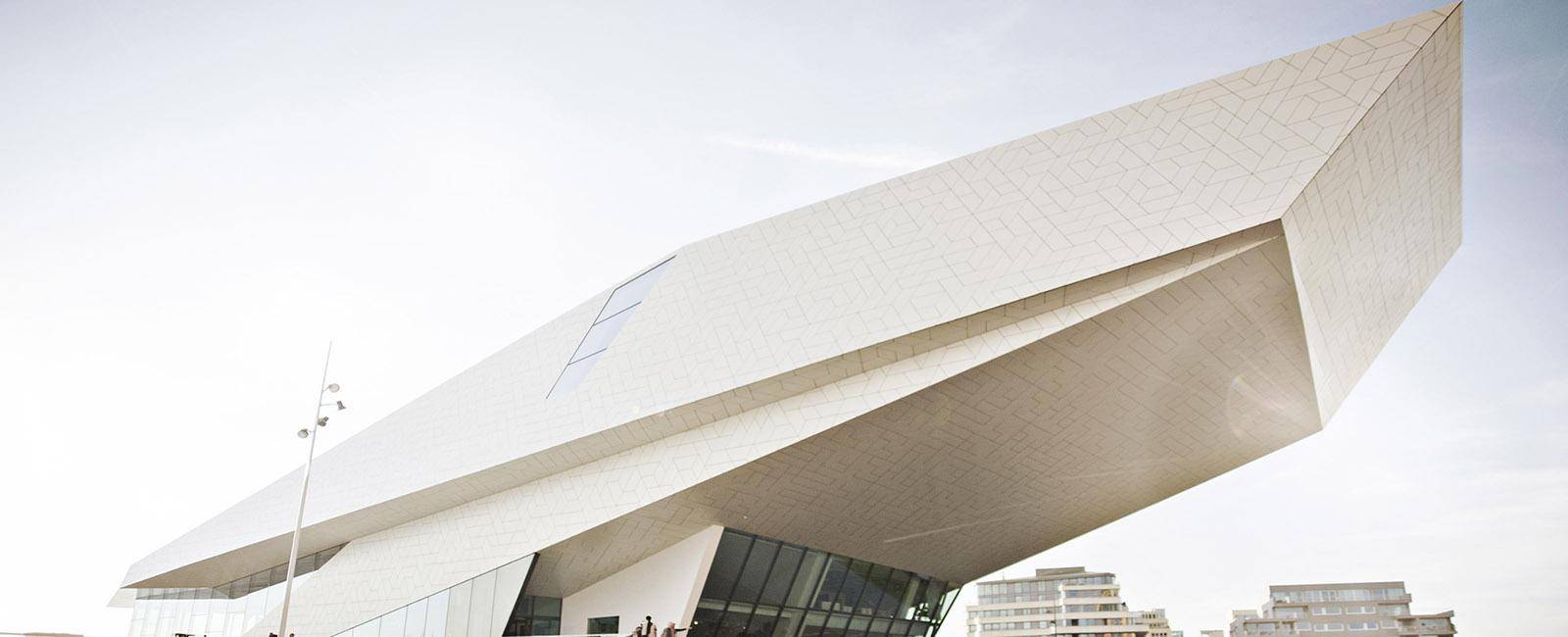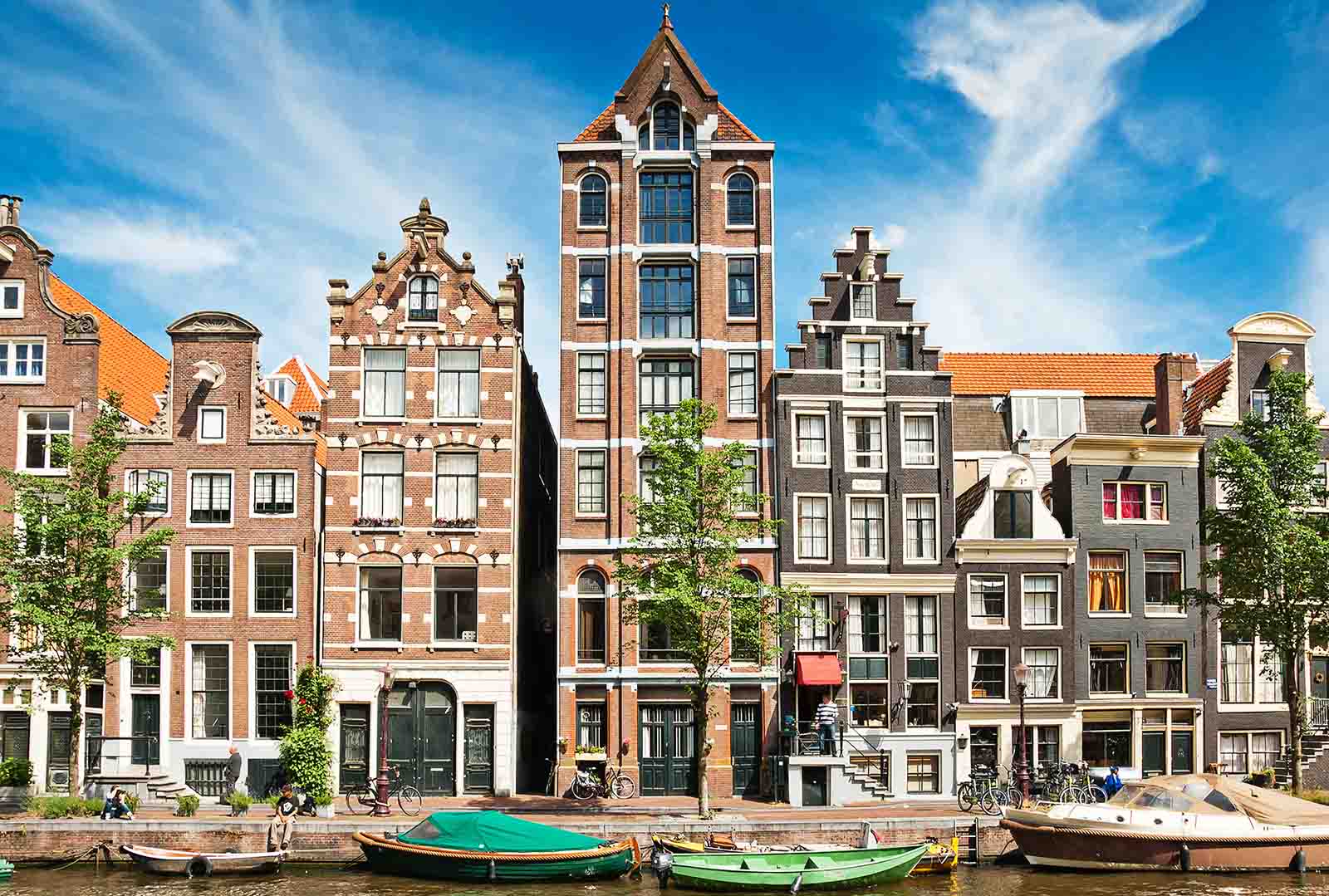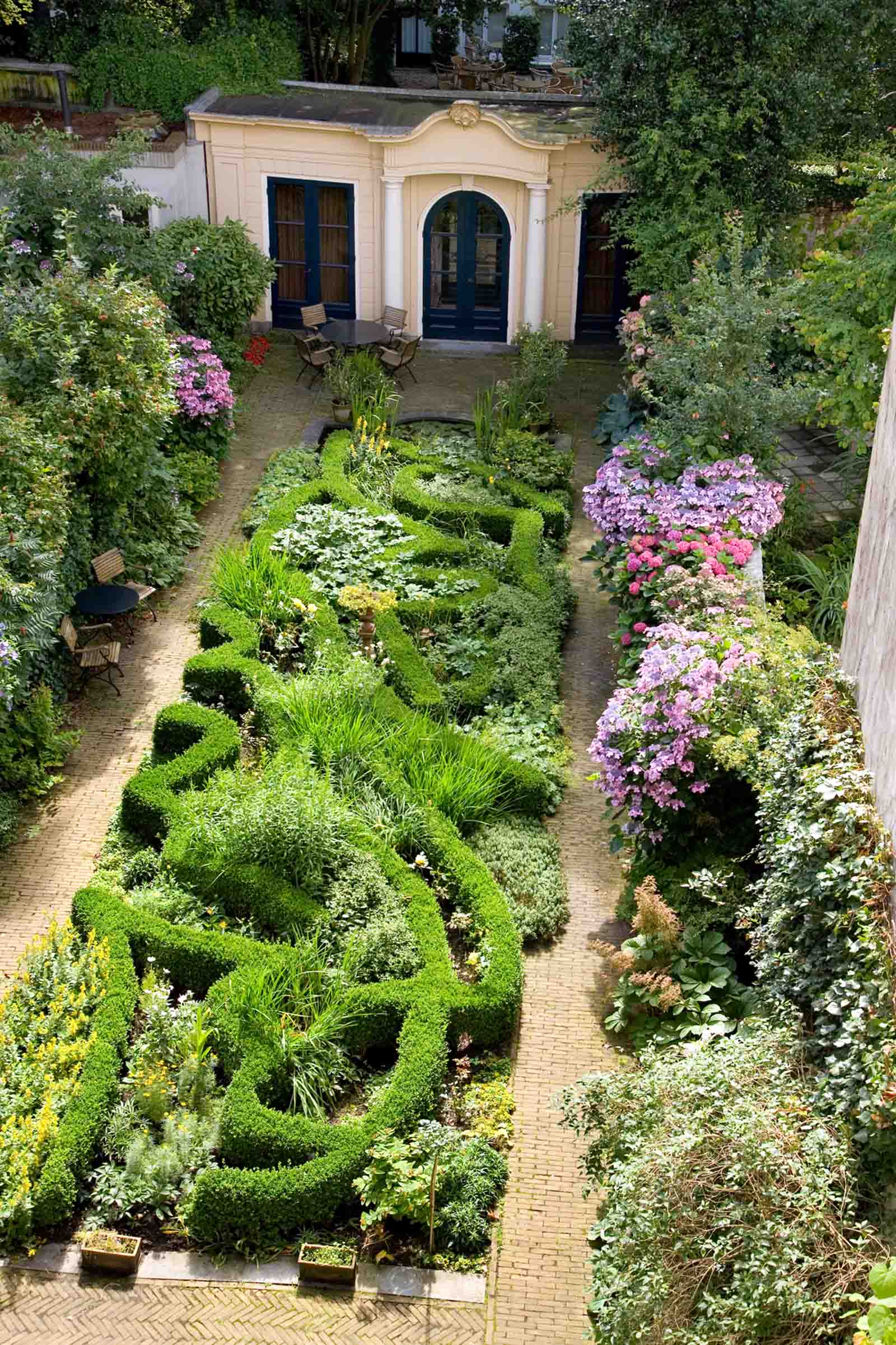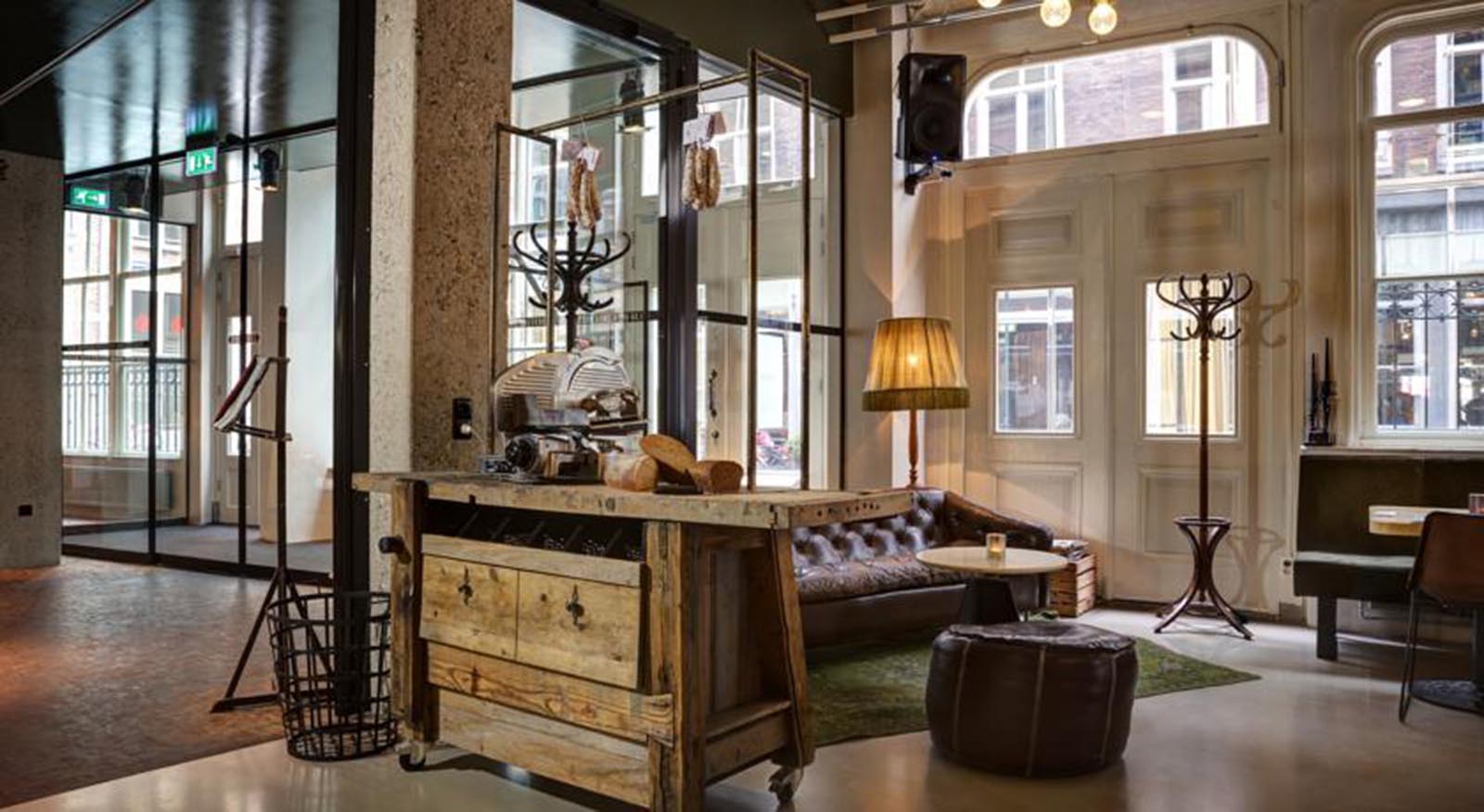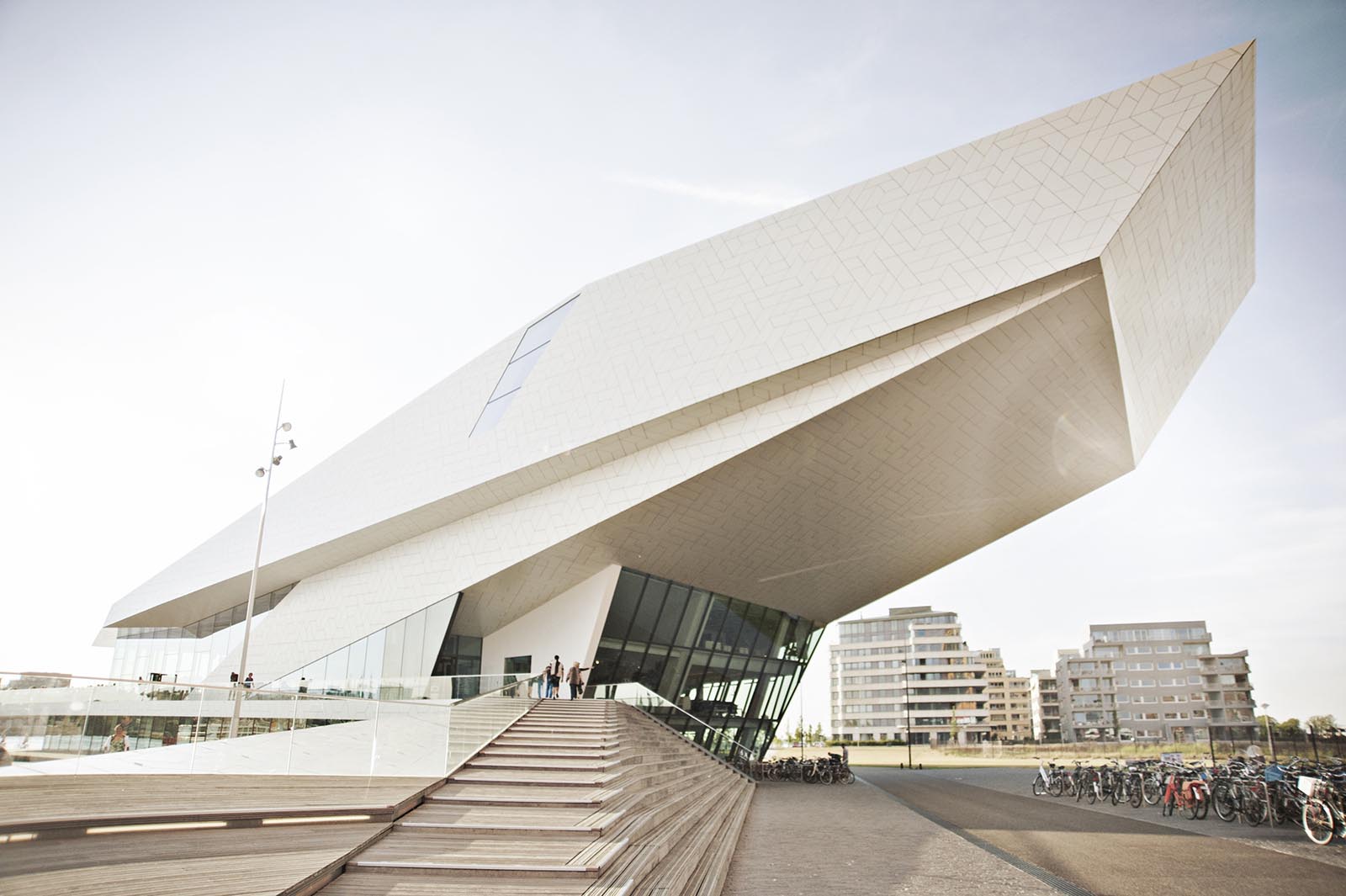
Standing at Amsterdam Centraal Station facing the city, there’s a world of canals, 17th century canal houses, museums and bicycles in front of me. The long avenue at Damrak is full of tourists venturing south towards Dam Square, the Royal Palace and the city museums, on foot, trams and bicycles. It’s a scene familiar to anyone who has visited the Dutch capital, but to see a different side of the city, I go through to the back of the train station, to the river rather than the city side, to take the ferry across the River IJ to Amsterdam Noord.
I’ve rented a bike and as I wheel it onto the ferry for the short crossing to Buiksloterwegveer, I can already see A’DAM Toren on the opposite river bank. It was once the Shell Overhoeks tower until the company moved its offices and labs out of the area many years ago and now, after a couple of years of renovation, the tower is home to an observation deck on the 22nd floor, a revolving restaurant, Moon, and a top-floor sky bar and restaurant, Ma’dam, that turns into a nightclub after dark.
As well as being one of the city’s coolest party spaces, it’s one of the few places to get a bird’s eye view of the city, a view which will also be popular with guests of the tower’s 108-room hotel, Sir Adam. Its interiors pay homage to the local music and art scene with Crosley turntables in each room, mirrors etched with lyrics and works by local artists.
Just a few minutes beyond A’DAM Toren, I arrive at EYE, the national film museum of the Netherlands which is hard to miss on the waterfront space and appears as a different shape from every angle. Named after the River IJ (pronounced like ‘eye’), EYE has four cinemas with regular new releases and screenings but the highlight is an archive on the lower level with more than 37,000 titles on file. I sit in a free booth and start browsing the selection, everything from documentaries to full-length vintage features, and realise the hours can easily start to slip away but there’s still more to see. Also on the lower level is Panorama, an exhibition on the history of film, with some green-screen interactive exhibits. I round off my visit with a coffee on the riverside terrace bar, admiring the river views before setting off to explore more of Amsterdam Noord.
I go back to Centraal Station and take the ferry again further up river to NDSM Wharf (it’s not far to cycle from the EYE but the ferry is free and it’s a pleasant trip for cyclists and walkers). The old shipyard has become a thriving art community with rows of graffiti-covered warehouses and piles of shipping containers now transformed into studios, cafés and bars. On one side of the harbour basin are the masts of a tall ship and a floating boat-hotel. In the centre of the basin is an abandoned submarine, while on the other quay wall is a two-masted schooner called Zephyr, its jib sail flapping in the light breeze, parked in front of a warehouse with a crane behind.
From the outside, the curious collection of buildings has an air of abandonment but not all is as it seems. The crane turns out to be the lofty three-suite Crane Hotel Faralda (suites perched from 35 metres up); peeking inside a huge NDSM warehouse I find Art City, home to 200 artists’ and designers’ studios set out in rows with mini ‘streets’ between them; and, when I see a bunch of people disappearing through the end of a pile of shipping containers in a carpark I follow and find myself stepping into Pllek, a large buzzing restaurant space with corrugated iron walls and a front wall of glass opening on to a riverside beach, complete with sand and deckchairs. While I munch on a sandwich, the waiter points out the dance floor and tells me how the restaurant’s bench-style tables and chairs are cleared away at midnight on weekends for DJs until the early hours. In summer, the wide outdoor spaces are the setting for festivals, concerts and food and vintage markets. It’s Amsterdam’s newest, most vibrant area and it’s still evolving.
Another easy cycle trip from the EYE is along Amsterdam Noord’s beautiful street of Nieuwendammerdijk, a long thin street which has wooden houses dating back as far as 1565. As I ride along I imagine its days as a flourishing shipbuilding village when many of the houses were occupied by former ships’ captains. At numbers 202 to 204, De Halve Moen (the Half Moon house), was built by shipbuilder Gerardus de Vries Lentsh in 1909 and takes its name from the ship that had sailed from the Netherlands into what is now New York exactly 300 years before, in 1609. The ship was contracted by the Dutch East India Company to English explorer Henry Hudson to find a safe passage to the Spice Islands and China in the East.
No visit to Amsterdam is complete without a cycle or stroll to view the canal houses where wealthy ship merchants and some of the nation’s great artists once lived. One of the best to see inside and muse on life in those times is Museum Van Loon at Keizersgracht 672, on one of the most prestigious canals. The house was built in 1672 and first occupied by artist Ferdinand Bol, a pupil of Rembrandt, but it takes its name from the family that were its last residents and founders of the museum. A young Willem van Loon became the owner of the house and took up residence in 1884 when his father gave it to him as a wedding present.
In a city full of museums (Our Lord in the Attic is another with an interesting history), this one is a little different because descendants of the Van Loon family still live in the upper floors of the house and continue to open it to the public daily. The drawing room and dining rooms on the ground floor are magnificent, with a selection of impressive family portraits in each room as well as ornate furniture and wood panelling. There are also bedrooms, formal gardens and a coach house to explore – often special exhibitions are on display and taking time out to sit and admire the garden is a highlight.
Revived by coffee and cake in the garden of Museum Van Loon I continue cycling along Keizersgracht and neighbouring streets Herengracht and Prinsengracht (Anne Frank House is along here) to admire the best of the canal houses.
The Negen Straatjes (Nine Streets) is a network of cobbled streets that cuts through this canal belt, lined with boutiques, galleries, great cafés and restaurants. It’s a shopper’s delight with everything from cutting edge design to vintage wares. Heading west across the Prinsengracht canal, the Jordaan area is home to more upmarket galleries and boutiques as well as some of Amsterdam’s oldest ‘brown cafés’ or pubs – Café Chris is the oldest, dating back to 1624, and still a popular hangout, as is Papeneiland (1642) or Café ’t Smalle (1780) not far from Anne Frank House. This part of the tour is best done without the bike as the ‘cafés’ get pretty lively at night and it’s a fun way to end the day, sampling some of Amsterdam’s traditional brews.
Eat
- Pllek, budget-friendly eats in a rough-and-ready interior – get there early for a spot on the man-made riverside beach during good weather. Tt Neveritaweg 59.
- IJ-Kantine, a mix of French and international cuisine with an industrial-themed interior in a large bright space right beside the ferry. NDSM-kade 5.
- Café Thijssen, grab an outdoor table on a nice day for brunch or coffee at this popular Jordaan corner meeting spot. Brouwersgracht 107.
Play
- Mac Bike rental, bike hire from Mac Bike, just a few minutes from Amsterdam Centraal. Oosterdokskade 151 -1.
- Museum Night, on the first Saturday in November around 50 museums open for Museum Night Amsterdam, an annual event of concerts, tours and performances in one night. Various locations.
Stay
- ClinkNOORD, hostel in Amsterdam Noord with plenty of creative spaces including a studio, gallery, nightclub and programs for visiting artists, bands and writers which includes free stays. Badhuiskade 3, 1031 KV.
- Hotel V Nesplein, in the heart of the old town for easy access to everything and interiors that blend classy vintage with industrial chic and mod cons – free high speed WiFi, of course, and a ‘Living Lobby’ for hanging out after hours. Nes 49, 1012 KD.
GETTING THERE

